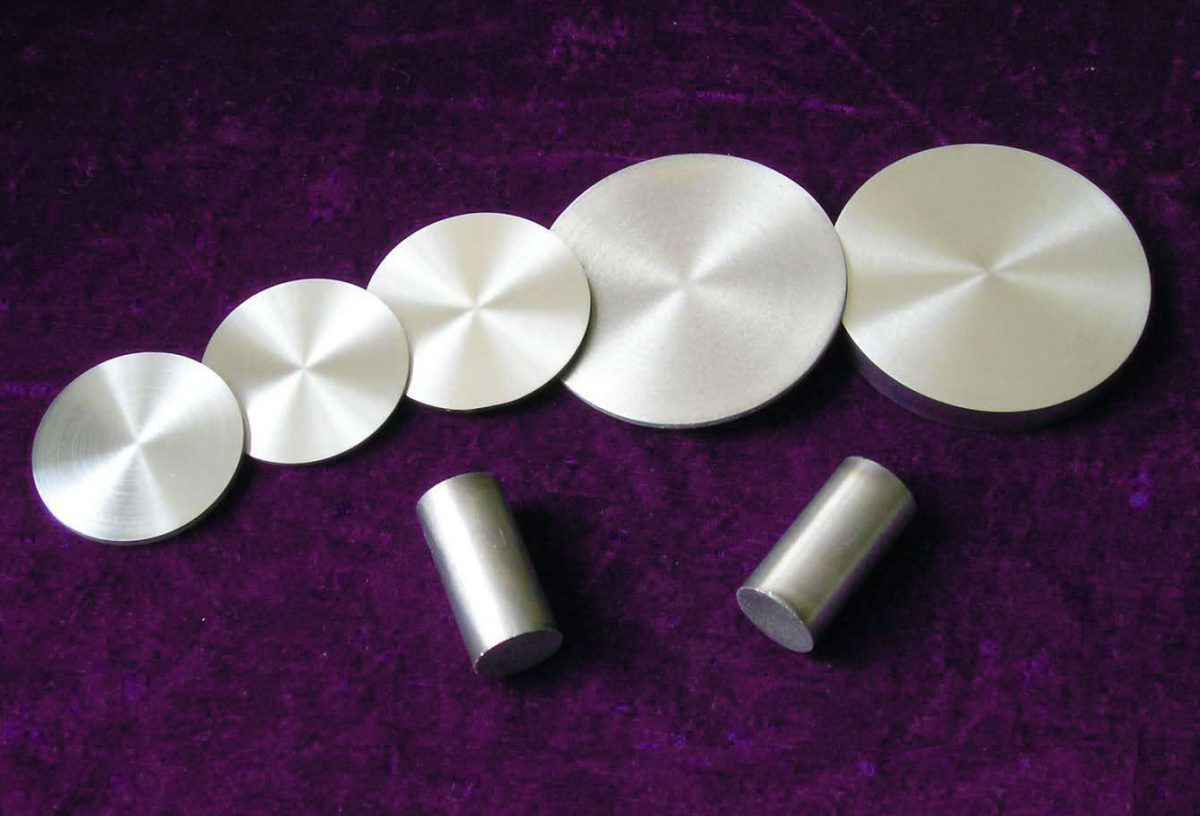The sputtering target is a key required material for vacuum film coating. It refers to a material that can ionize the surface by the current-binding magnetic field.
Almost all sputter coating equipment uses a powerful magnet to spiral the electrons to accelerate the ionization of the argon around the target, resulting in an increased likelihood of collision between the target and the argon ions, thereby increasing the sputtering rate.
Typically, most metal plating uses DC sputtering, while non-conductive ceramic materials use RF sputtering. The basic principle is that argon (Ar) ions are struck against the target surface by glow discharge in a vacuum, and cations in the plasma are accelerated as a sputter material to the surface of the negative electrode. The impact will cause the material of the target to fly out and deposit on the substrate to form a film.
Generally, the sputter coating process has several features:
(1)Many materials can be deposited into thin film materials by sputtering, including metals, alloys, insulators, and the like.
(2)Under appropriate conditions, different component target materials can be made into films of the same material.
(3)Oxides or other compounds of the target substance and gas molecules can be prepared by adding oxygen or other reactive gas to the discharge atmosphere.
(4)Highly accurate film can be obtained by controlling the magnitude of the input current and the length of the sputtering time.
(5)For large-area coatings, sputter deposition is definitely superior to other coating processes.
(6)In the vacuum vessel, the sputtered particles are not affected by gravity, and the positions of the target and the substrate can be freely aligned.
(7)The bond strength between the sputter-coated substrate and the film is 10 times or more the adhesive strength of a general evaporated deposited film. Furthermore, since the sputtered particles have high energy, the surface of the film is continuously diffused to obtain a hard and dense film. At the same time, high energy allows the substrate to obtain a crystalline film at a lower temperature.
(8)The nucleation density at the initial stage of film formation is high, and an extremely thin continuous film of 10 nm or less can be produced.
(9)Sputtering targets have a long service life and can be continuously produced over a long period of time.
(10)The sputtering target can be made into various shapes. By special design of the shape of the target, the sputtering process can be better controlled and the sputtering efficiency can be most effectively improved.
For more information, please visit https://www.sputtertargets.net/.

